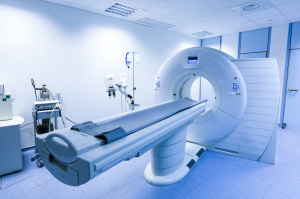by
John W. Mitchell, Senior Correspondent | November 23, 2016
In a study that seems to point to the psychology of reassurance, patients who presented to an academic urban emergency department with atraumatic headache were sufficiently comforted by a negative CT scan to reduce the likelihood they would return to the ED within 30 days.
"We wanted to look at how our decisions in the ED affected downstream care trajectories, to try to look at what benefit is provided by the reassurance of a negative CT scan," Dr. Brian W. Patterson, assistant professor, Berbee Walsh Department of Emergency Medicine at the University of Wisconsin School of Medicine and Public Health, and lead author, told HCB News.
According to Patterson, the study was aimed at examining two conflicting trends: an increasing scope of practice as the ED serves as a referral center for outpatient diagnosis, and a simultaneous increase in scrutiny of ED imaging and resource utilization related to increased health care spending. In other words,
do ED patients receive unnecessary imaging tests?



Ad Statistics
Times Displayed: 2839
Times Visited: 27 Fast-moving cardiac structures have a big impact on imaging. Fujifilm’s SCENARIA View premium performance CT brings solutions to address motion in Coronary CTA while delivering unique dose saving and workflow increasing benefits.
"Our key finding was that patients presenting with a chief complaint of headache were about half as likely to return to the Emergency Department in the next 30 days if they had a head CT performed," Patterson said. "What [the findings] do suggest is that as we continue to incentivize providers to maximize efficiency and patient safety, we need to do so while viewing ED care beyond the scope of a single visit."
The retrospective study reviewed 922 ED discharges in which the chief complaint of headache was included. Patterson said that atraumatic headache involving CT scan was selected because it has a low yield for identifying emergent pathology in the ED. However, he added that headache patients often arrive at the ED requesting a CT scan. The study was just published in the December issue of
American Journal of Roentgenology.
"We wanted to look at how our decisions in the ED affected downstream care trajectories, to try to look at what benefit is provided by the reassurance of a negative CT scan," Patterson explained.
The study found that a total of 139 patients revisited within 30 days. The return rate was 11.2 percent among patients who received a CT at their initial visit and 21.1 percent among those who did not. Patterson stressed that the study findings do not necessarily call for an increase in ED CT scans for atraumatic headache. But the results do offer food for thought related to reducing imaging and other health care resource utilization beyond the ED.
"It is very difficult to measure the value of the reassurance provided by a negative imaging study ... this work suggests that it may be substantial," said Patterson.

